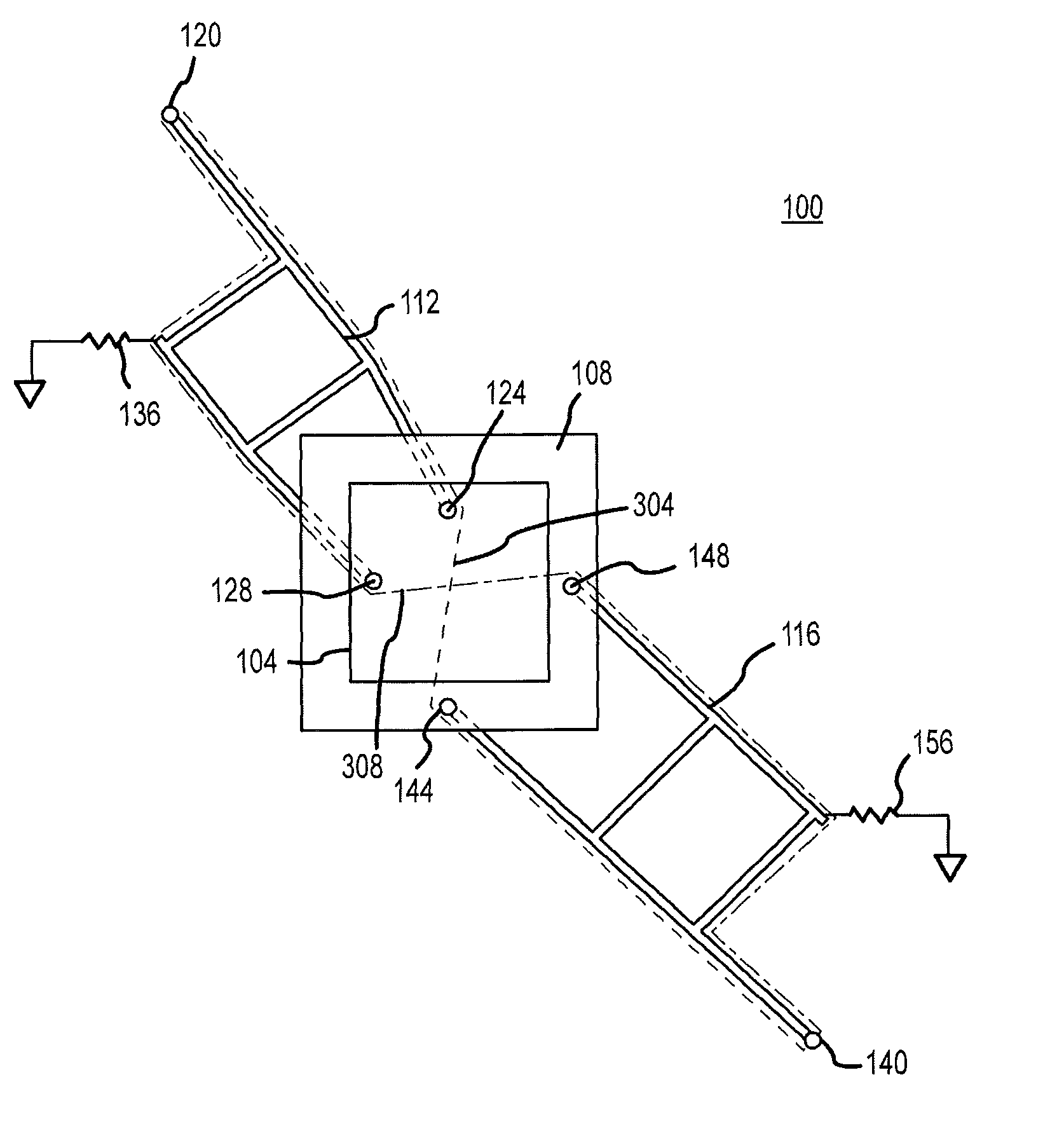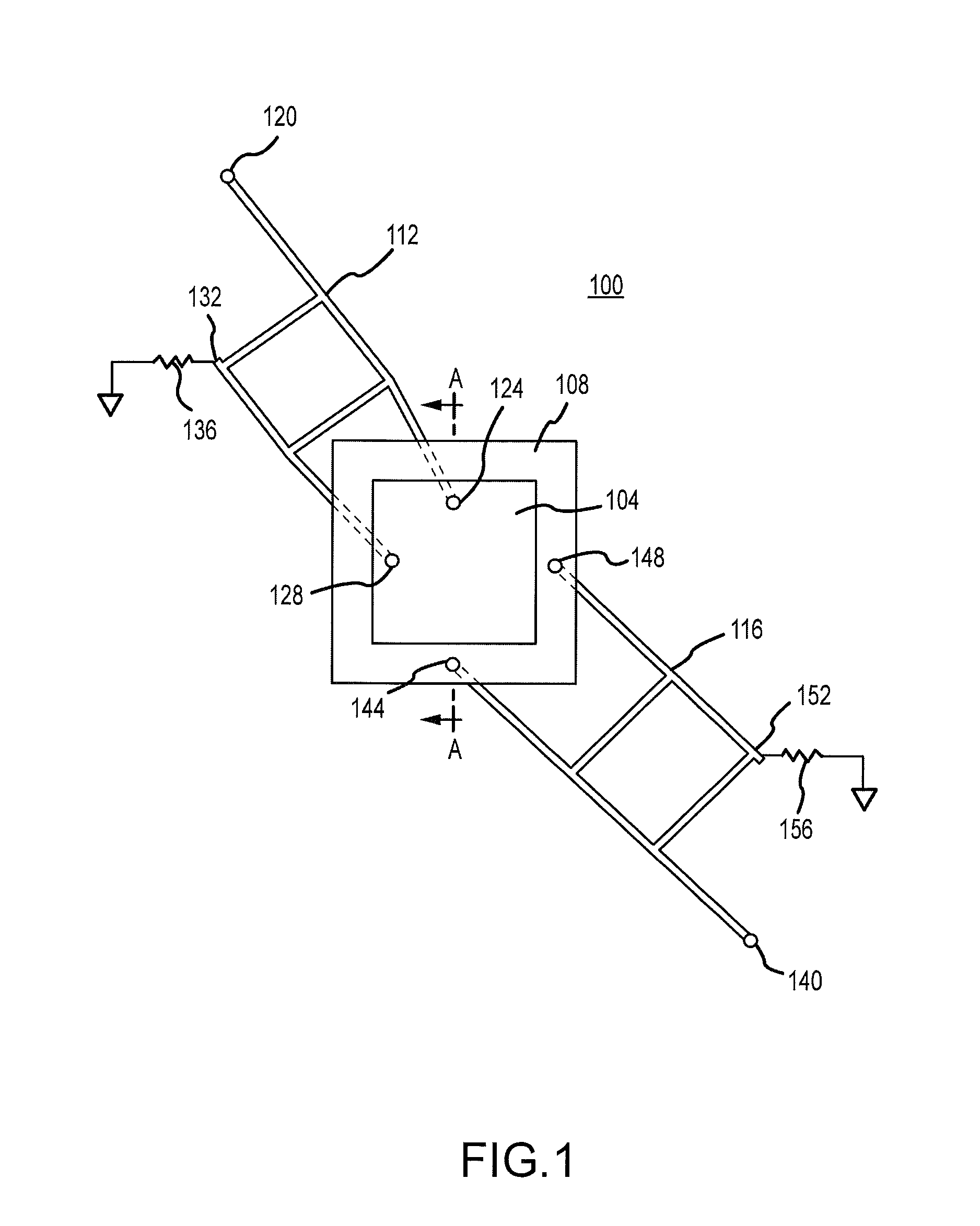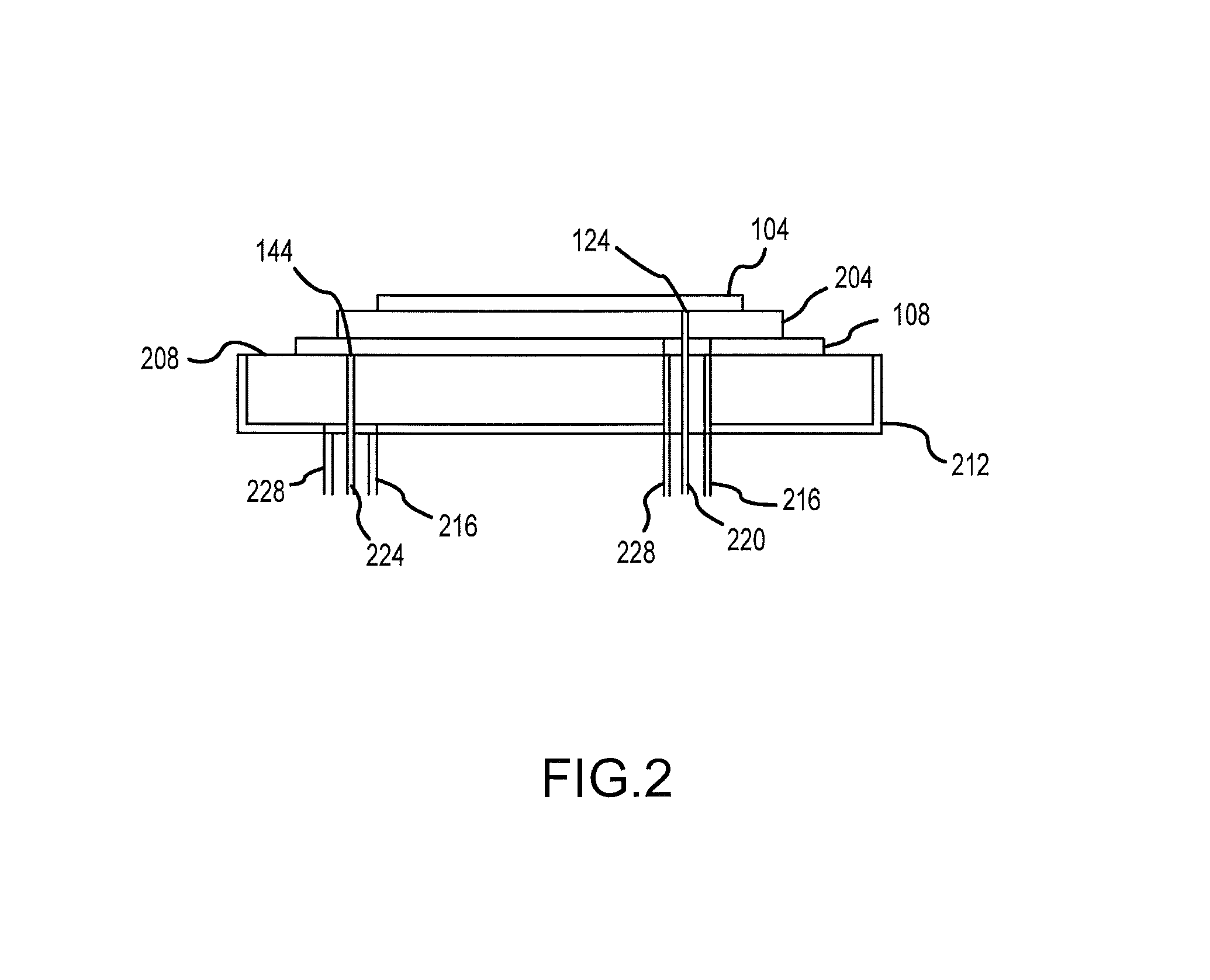Dual band circularly polarized feed
a circular polarized feed and dual band technology, applied in the direction of simultaneous aerial operations, electrically short antennas, antennas, etc., can solve the problems of destructive interference and cancellation
- Summary
- Abstract
- Description
- Claims
- Application Information
AI Technical Summary
Benefits of technology
Problems solved by technology
Method used
Image
Examples
Embodiment Construction
[0017]FIG. 1 depicts an antenna system 100 in accordance with embodiments of the disclosed invention in plan view. The antenna system 100 generally includes first 1011 and second 108 radiating elements or patches 104, 108. As shown, the first patch 104 is superimposed over or stacked with respect to the second patch 108. Moreover, as can be appreciated by one of skill in the art, the first patch 104 is dimensioned for use in connection with a first, relatively high (compared to the second patch 108) frequency or frequency band (i.e., a relatively short wavelength or range of wavelengths). The second patch 108 is dimensioned for use in connection with a second, relatively low (compared to the first patch 104) frequency or frequency band (i.e., a relatively long wavelength or range of wavelengths). Accordingly, the antenna system 100 is a dual band system. As illustrated, the first patch 104 and the second patch 108 can comprise round elements that are concentric with respect to one a...
PUM
 Login to View More
Login to View More Abstract
Description
Claims
Application Information
 Login to View More
Login to View More - R&D
- Intellectual Property
- Life Sciences
- Materials
- Tech Scout
- Unparalleled Data Quality
- Higher Quality Content
- 60% Fewer Hallucinations
Browse by: Latest US Patents, China's latest patents, Technical Efficacy Thesaurus, Application Domain, Technology Topic, Popular Technical Reports.
© 2025 PatSnap. All rights reserved.Legal|Privacy policy|Modern Slavery Act Transparency Statement|Sitemap|About US| Contact US: help@patsnap.com



